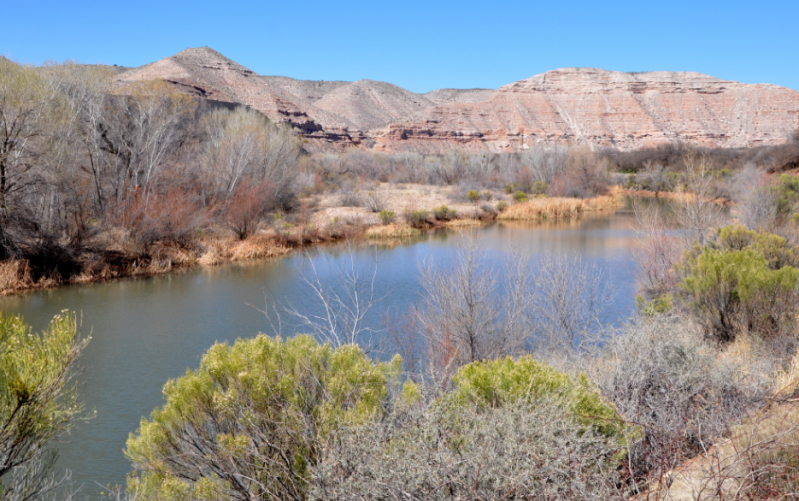Groundwater Pumping Will Drain Arizona's Upper Verde River
Published on by Water Network Research, Official research team of The Water Network in Academic
Local groundwater pumping to support sprawling development in Prescott and Prescott Valley, including a proposed $400 million pipeline, will dramatically and permanently reduce the upper Verde River flow, according to a new study.
The findings undercut claims from those communities that the water can be replenished.

The study, conducted for the Center for Biological Diversity by Integrated Hydro Systems, projects a 50 percent reduction in the upper Verde by about 2050 and at least 75 percent less water flow by 2120. These reductions would destroy the riparian ecosystem along the river, including habitat for endangered wildlife.
“We’ll lose the upper Verde unless the Prescott Pipeline is stopped,” said Dr. Robin Silver, cofounder and board member of the Center. “There’s a steep price to be paid for unchecked development. We can’t sacrifice this beautiful river and the ecosystem it supports. No new groundwater pumping should be permitted until the future of the river can be guaranteed for our children and grandchildren.”
The study is based on projections from the Yavapai County Water Advisory Committee and the U.S. Geological Survey regarding groundwater pumping, water use and population growth in Prescott and Prescott Valley. It doesn’t include the effects of climate change, the groundwater needs of the massive proposed Yavapai Ranch and Deep Well Ranch developments, or the proposed groundwater-dependent Longview pump generation project.
Yavapai County Water Background
After a decades-long fight over water rights, Prescott and Prescott Valley reached a deal with the Salt River Project to siphon as much as 2.6 billion gallons of water a year from the Big Chino aquifer, near Paulden, to support growth. This project is called the Prescott Pipeline. The local source in the Big Chino Valley is called the Big Chino Water Ranch.
Protecting the Verde River is a key part of the agreement. The deal required that the communities’ wells don’t pull water from the Verde River, which is a source of drinking water for metropolitan Phoenix. Salt River Project holds rights to the water in the river.
Verde River Background
The primary source for the upper Verde River comes from the groundwater of the upper Verde watershed. Several endangered species depend on the upper Verde for their survival; it’s designated critical habitat for spikedace and loach minnow and is proposed critical habitat for the Northern Mexican garter snake and narrow-headed garter snake.
Most of the upper Verde River is in Prescott National Forest, and the Verde is one of only two federally designated wild and scenic rivers in Arizona. The irreplaceable upper Verde riparian area is the heart of the Prescott National Forest.
Groundwater pumping in the Big Chino Valley intercepts water that belongs to the Prescott National Forest, the Yavapai Apache Nation, the Fort McDowell Yavapai Nation and Salt River Project.

Simulated discharge along Upper Verde at Paulden gage — 1910 to 2120. Assumed regional pumping wells increase 3%/year (2006 to 2056), and 8068 ac-ft/yr pumping at 10 BCWR wells. Courtesy Integrated Hydro Systems, LLC. This image is available for media use.
Read 'Review of Potential Impacts of Projected Big Chino Water Ranch and Regional Groundwater Pumping on Upper Verde River Flows, Arizona' here
Source: Center for Biological Diversity
Media
Taxonomy
- Resource Management
- Groundwater
- Water Resource Management
- Groundwater Assessment
- Groundwater Modeling
- Groundwater Mapping
- Resource Mobilisation